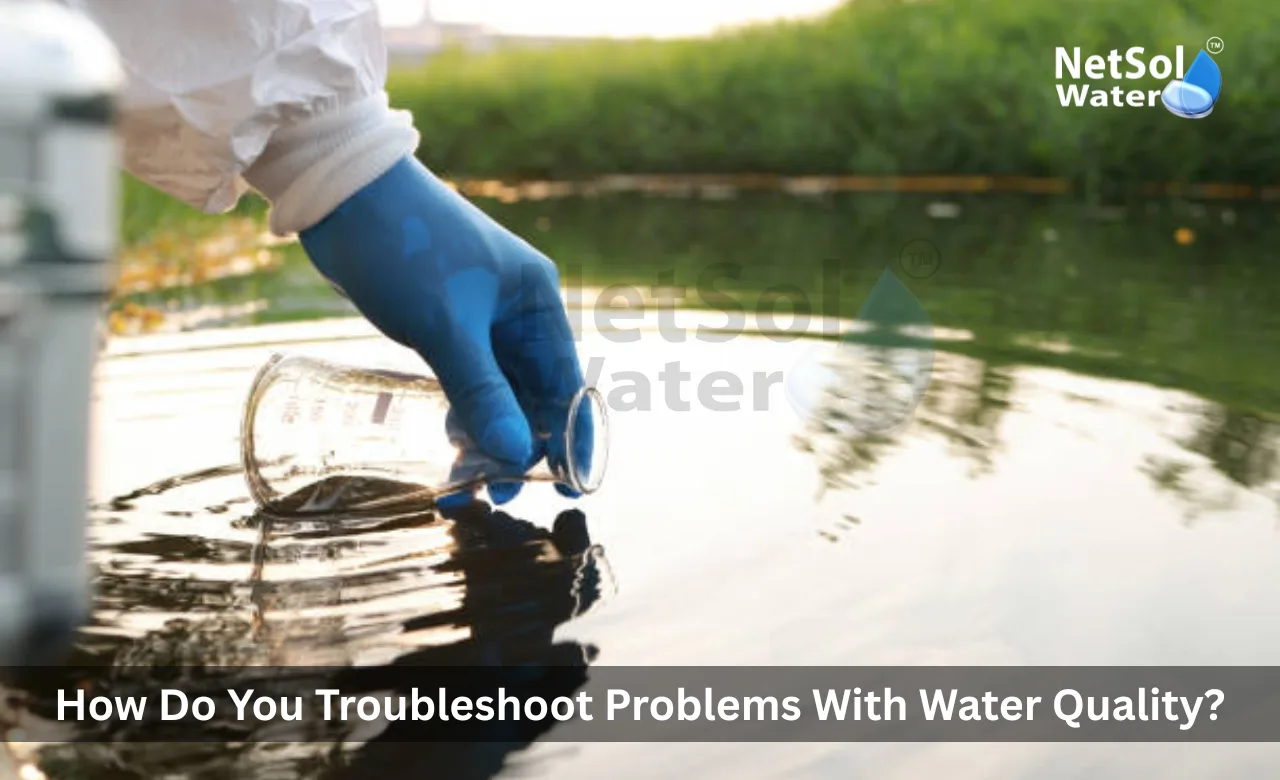How Do You Troubleshoot Problems With Water Quality?
A water treatment plant keeps water safe for people and industry. Good water supports health and helps factories run without delays. Netsol Water is the leading Water Treatment Plant Manufacturer and it makes plants that handle raw water and deliver clean water. Netsol Water deliver safe clean water to homes and industry. We will explore how to spot water quality problems and how to fix them quickly on site.
Identify common causes and initial checks
Troubleshooting starts with knowing why water quality changes. Let us have a look on some common causes and simple initial checks.
Sediment and turbidity problems
Sediment can enter a plant after rain or from damaged intake screens. Sediment raises turbidity and can block filters. Operators should check the intake screen and the raw water pump area. Inspect the settling basins and the inside of the clarifier. If solids appear at the inlet the plant may need faster settling or a temporary coagulant dose increase. Check the backwash schedule on multimedia filters. Increase backwash frequency when you see pressure rise. Replace or clean worn nozzles that cause poor distribution. These steps restore filter performance and reduce turbidity in treated water.
Chemical contamination and unexpected taste or odor
A nearby industrial discharge or a failed upstream treatment step can add chemicals that change taste or smell. Start by comparing recent lab reports with normal ranges. Use simple on site tests for chlorine pH and conductivity. If unusual results appear isolate the affected streams and reduce blending until you know the cause. Activated carbon can remove many organic tastes and odors. When you use carbon check contact time and dosing to ensure removal. If a toxic chemical likely entered the system contact authorities and stop distribution until labs confirm safety.
Testing procedures and corrective actions
Good troubleshooting uses clear tests and clear actions. Let us have a look on some common tests and the actions they suggest.
On site tests
On site tests give fast answers that help prioritize action. Measure turbidity pH residual chlorine and conductivity. Turbidity shows solids and filter issues. pH affects disinfection efficiency and corrosion. Chlorine residual shows whether disinfection reaches distribution. Conductivity flags salts and dissolved chemicals. When one test flags a problem run adjacent checks to find a source. For example low chlorine and high turbidity suggest that filters let solids through and these solids consume chlorine. Act by increasing coagulant dosing and performing a controlled filter backwash. Always retest after action to confirm improvement.
Lab tests and targeted corrections
Send samples for comprehensive lab analysis when on site tests do not find a clear cause. Labs measure bacteria metals and organics that on site kits miss. Use lab results to design a correction plan. If bacteria appear raise chlorine contact time and inspect biofilm in tanks and pipes. If heavy metals show up identify the source and use ion exchange or membrane filtration to remove those ions. When organics cause taste issues install or recharge activated carbon or consider advanced oxidation. After any major correction update the monitoring plan to detect similar problems early.
Read some interesting information for Sewage Treatment Plant Manufacturers
Conclusion
Good troubleshooting keeps water safe and keeps a plant running well. Use clear checks record events and act on test results. A strong monitoring routine and timely corrective steps limit risk and reduce cost. If you need help with design checks or a full inspection reach out to Netsol Water. Netsol Water is the leading Water Treatment Plant Manufacturer and it can offer audits upgrades and onsite support. Contact the team for a consultation and to request a site visit to review your Water Treatment Plant performance.
Contact Netsol Water at:
Phone: +91-9650608473
Email: enquiry@netsolwater.com


